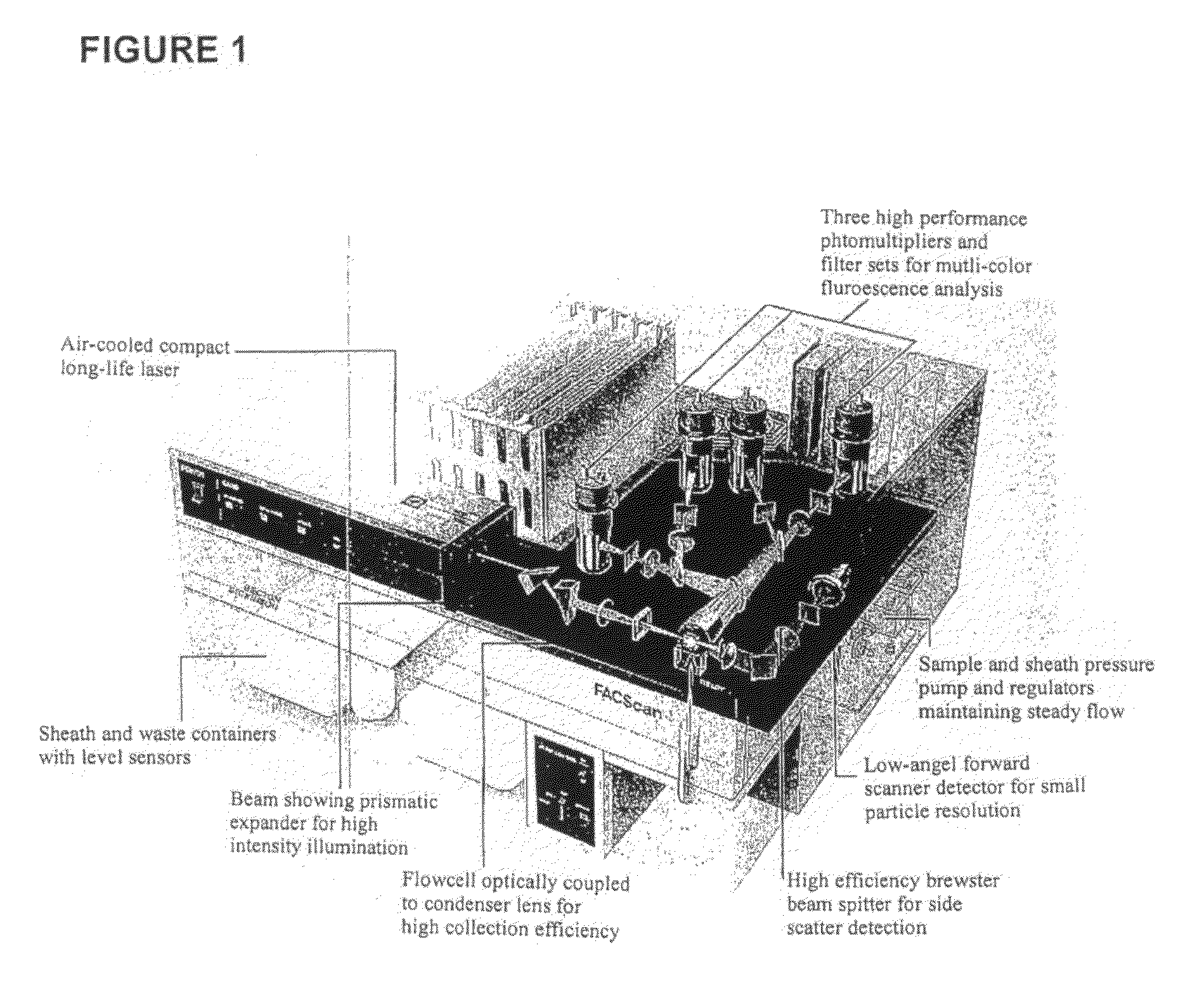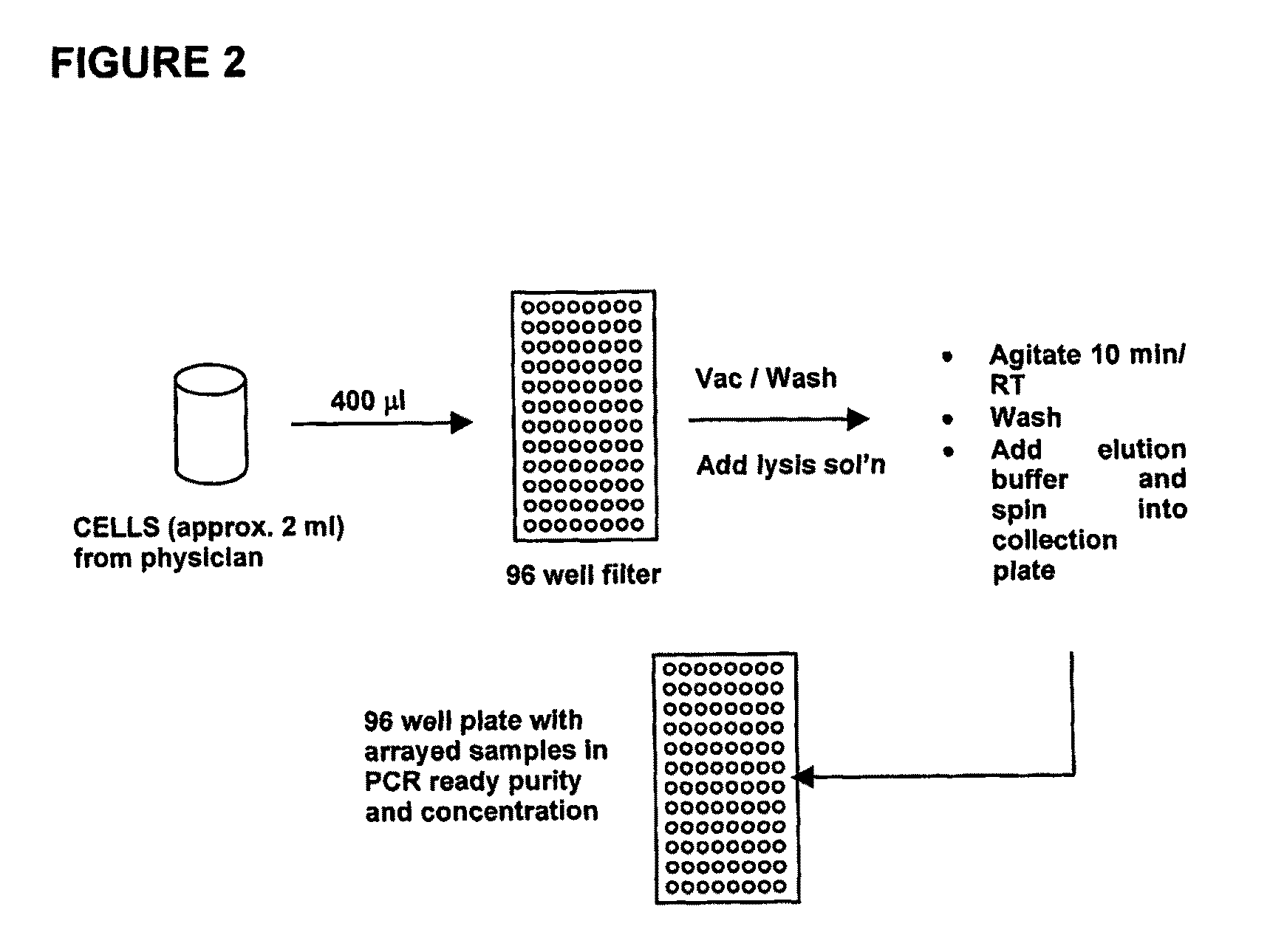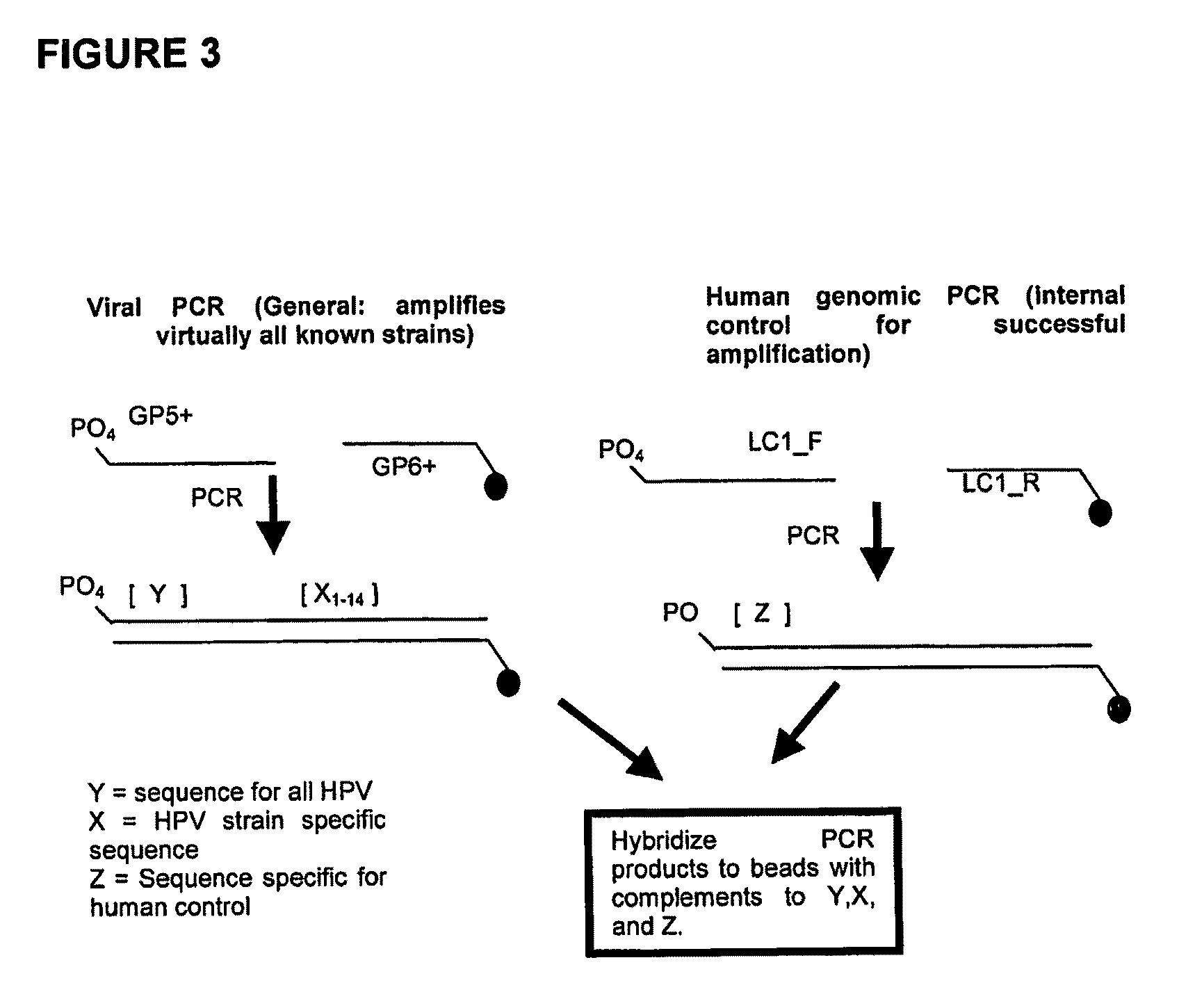Human papilloma virus (HPV) detection using nucleic acid probes, microbeads and fluorescent-activated cell sorter (FACS)
a technology of human papilloma virus and nucleic acid probe, which is applied in the field of diagnostic and detection assays, can solve the problems of unsatisfactory assay for unequivocal determination, high labor intensity, and high cost of pap smear
- Summary
- Abstract
- Description
- Claims
- Application Information
AI Technical Summary
Problems solved by technology
Method used
Image
Examples
example 1
HPV Diagnosis—DNA Isolation and Amplification
[0263]An overview of the DNA extraction protocol used to isolate DNA for the HPV diagnostic method is shown in FIG. 2.
[0264]As shown in FIG. 3, PCR was used to amplify the DNA sample. The primers GP5+ and GP6+ were used to generate an amplicon for any HPV strain which was present in the DNA sample. Primer GP6+ comprised a fluorescent label, specifically Cy5 to allow later visualization of the amplicon binding to the binding agents. The viral amplicons generated comprised both a conserved region (Y) which is conserved among all the strains of HPV examined and a region which is variable (i.e. strain-specific) between HPV strains, Xn, wherein n represents a variable region associated with each HPV strain. The immobilized binding partners on beads specifically bind to the HPV strain-specific genome.
[0265]Also, an amplicon from the human subject genomic DNA was also generated using the LC1_F and LC1_R primers to serve as a control. In this cas...
example 2
HPV Diagnosis—Multiplex Detection
[0266]The amplicons generated in Example 1 were hybridized to an array of binding agents, each carrying a polynucleotide which is complementary to the variable region of the putative viral amplicon generated from each of HPV strains c, 11, 16, 18, 31, 33, 35, 42, 45, 51, 52, 56, 58, 59, 67 and 68 (X1 through X16). See FIG. 9 for the nucleotide sequences of the capture nucleic acids immobilized to the beads. Furthermore, the array comprises a binding agent which comprises a polynucleotide which is complementary to conserved region of the HPV viral amplicons (Y). Finally, a binding agent comprising a polynucleotide which is complementary to the sequence of the human control amplicon is included. The capture nucleic acid may be DNA or RNA. If RNA is used, a reverse transcriptase may be required to generate RNA from the DNA amplicon.
[0267]Each of the binding agents in the array is comprises a microsphere or bead with a distinct size and distinct intensit...
example 3
Comparison of the Multiplex Detection Method with Traditional HPV Diagnosis
[0271]Table 5, below, provides an overview comparing the multiplex HPV detection method of the present invention with the current histological method for HPV diagnosis.
[0272]
TABLE 5Comparison of HPV diagnostic methodsHPV DiagnosticMethodThroughputReportControlsPresent1600 per day,all 13 “high risk”internal control, positiveInventionper instrumentstrains individuallycontrol, human gDNA controlidentifiedHistological350 per day“high risk” classno internal control, “low risk”based methodgenerally identifiedpositive control, “high reiskpositive control
PUM
| Property | Measurement | Unit |
|---|---|---|
| bead sizes | aaaaa | aaaaa |
| bead sizes | aaaaa | aaaaa |
| bead sizes | aaaaa | aaaaa |
Abstract
Description
Claims
Application Information
 Login to View More
Login to View More - R&D
- Intellectual Property
- Life Sciences
- Materials
- Tech Scout
- Unparalleled Data Quality
- Higher Quality Content
- 60% Fewer Hallucinations
Browse by: Latest US Patents, China's latest patents, Technical Efficacy Thesaurus, Application Domain, Technology Topic, Popular Technical Reports.
© 2025 PatSnap. All rights reserved.Legal|Privacy policy|Modern Slavery Act Transparency Statement|Sitemap|About US| Contact US: help@patsnap.com



